Today on Thriller Thursday, we are giddy to have one of my favorite people in the whole wide world, the incomparable author and most generous man, New York Times bestselling author, THE Mr. David Morrell!
Find out more about David Morrell, by scrolling down. I encourage everyone to do yourself a favor and read each and every book David has ever written. You won’t be sorry!
You’ve been writing for several decades now in the Mystery/Suspense/Thriller genre. You’ve written about a Vietnam lethal soldier, a brotherhood of deadly assassins – with a wicked stepfather, secret weapons, dark secrets, violence, danger, fear, action, comic books and more! Your latest hit series is a Victorian crime thriller with the notorious “Opium-Eater” Thomas De Quincey. Is there anything you haven’t written about that you’d like to?
Often I choose a subject because I’m fascinated by it and can’t wait to learn about it. That was certainly the case with the Victorian mystery/thrillers. I’m like a Method actor. For me, research is everything. I immerse myself and sometimes believe that I’m actually there. At the moment, after six years, I’m still adjusting to being away from the harrowing fogbound streets of 1850s London, so I haven’t yet chosen a new direction, which will probably be contemporary.
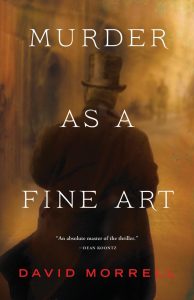 In the Thomas and Emily De Quincey series, MURDER AS A FINE ART, INSPECTOR OF THE DEAD and THE OPIUM EATER, you have clearly done extensive research on the time period and on Thomas De Quincey himself. What was it about Thomas De Quincey that appealed to you so much that you wanted to write a series with him in the lead?
In the Thomas and Emily De Quincey series, MURDER AS A FINE ART, INSPECTOR OF THE DEAD and THE OPIUM EATER, you have clearly done extensive research on the time period and on Thomas De Quincey himself. What was it about Thomas De Quincey that appealed to you so much that you wanted to write a series with him in the lead?
Thomas De Quincey is one of the most fascinating personalities of the 1800s. He wrote the first book about drug addiction, CONFESSIONS OF AN ENGLISH OPIUM-EATER. He invented the true-crime genre with the postscript to his essay, “On Murder Considered as One of the Fine Arts,” vividly recreating the infamous Ratcliffe Highway murders, the first publicized mass killings in England. De Quincey’s opium addiction caused him to have horrific nightmares. When he wakened, he tried to figure out where those nightmares came from. That caused him to invent the word “subconscious” long before Freud and to believe that the human mind is filled “with chasms and sunless abysses, layer upon layer.” I couldn’t resist the idea of pairing his radical psychological theories with the early efforts of Scotland Yard to investigate crime scenes. They’re proud of using plaster casts to preserve footprints, and along comes De Quincey with his startling notions about the secret chambers of the human mind.
Having read all of the books in your Thomas and Emily De Quincey Series, I can see these being made into films. Has Hollywood come calling yet?
A production company has indeed optioned the TV rights for a series based on MURDER AS A FINE ART. But the development process is slow, and even after FIRST BLOOD and the rest of the Rambo films, I never have expectations when it comes to films or television. Anything can happen—or not. At the moment, four of my novels are under option, the other three being CREEPERS, THE BROTHERHOOD OF THE ROSE, and LONG LOST. Actors come in and out of favor, as do directors and studio heads. Trends change. It’s a precarious process.
Had De Quincey not been an admitted opium addict, do you think his psychological theories would have been much more widely accepted?
Definitely. When I was in college, my nineteenth-century literature professor dismissed De Quincey’s work because of the opium addiction. But in fact, De Quincey’s influence is widespread, through Edgar Allan Poe, who admired him, to Sir Arthur Conan Doyle, who borrowed from both of them, making Holmes a drug user. Conan Doyle even mentions De Quincey in a Holmes story. De Quincey anticipated what came to be called the Sensation Novel, and he invented a new kind of literary criticism, which he called “psychological.” He’s a big deal.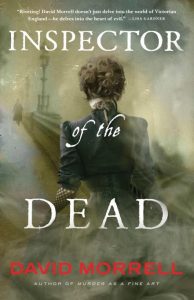
De Quincey’s daughter’s is a very strong character with firebrand views of woman’s rights years before her time. Was Miss De Quincey truly an early suffragette or is she more a fictional character?
De Quincey had three daughters, but two were married or about to be, and it remained for twenty-one-year-old Emily to watch over her brilliant 69-year-old father. Emily was forever reminding him as he leaned over a candle to write, “Father, you set fire to your hair again.” Not much is known about her, except that she was independent and very funny. She didn’t die until 1917, at the height of WWI. She seems to be everyone’s favorite character in MURDER AS A FINE ART and INSPECTOR OF THE DEAD. I worried that readers might be put off by De Quincey’s drug addiction, no matter how brilliant he was, so I periodically show him from Emily’s perspective, the idea being that if Emily loves him and we love Emily, therefore we’ll love her father.
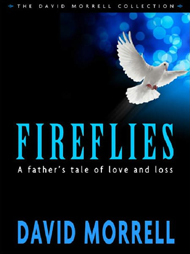 You have also written a heart-wrenching and soul-bearing autobiography, FIREFLIES: A FATHER’S TALE OF LOVE AND LOSS, regarding your son, Matthew, and his death at the early age of 15. It is truly an amazing story and I’m sure has helped many parents who have experienced the loss of a child. Do you still receive messages from readers and has there been one over the years that has touched you most?
You have also written a heart-wrenching and soul-bearing autobiography, FIREFLIES: A FATHER’S TALE OF LOVE AND LOSS, regarding your son, Matthew, and his death at the early age of 15. It is truly an amazing story and I’m sure has helped many parents who have experienced the loss of a child. Do you still receive messages from readers and has there been one over the years that has touched you most?
All the messages are touching, and I still receive them. For me, the most painful emotion is grief. In our culture, men are reluctant to show emotions, and sometimes that can lead to unfortunate consequences. I thought that if the creator of Rambo could describe the debilitating grief that I felt for my son, then perhaps others would be willing to express themselves. Matthew died from a rare bone cancer called Ewing’s sarcoma. Years later one of my grandchildren, Natalie, died from the same rare disease. When I’m asked to give talks to grief groups. I always start by asking, “How are your panic attacks?” It gets a laugh, because they finally feel free to talk about things that society doesn’t want to hear about
Just this summer, Gauntlet Press released a special signed collector’s hardback copy of FIRST BLOOD. FIRST BLOOD hasn’t gone out of print for 43 years. What is it about the Rambo stories that you think resonates with your readers?
My n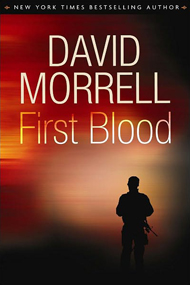 ovel and the film drew attention to PTSD and encouraged people to discuss it. The U.S. has been involved in so many wars, the psychological cost of which becomes ever greater. That’s one reason the stories continue to resonate. Then too, the character is an archetype of the powerful warrior. When I wrote the novel more than four decades ago, I had recently discovered Joseph Campbell’s THE HERO WITH A THOUSAND FACES and deliberately used archetypal situations to make the novel feel mythic. The scars on Rambo’s back and chest represent those on his soul, and the ultimate message is that being a warrior has a terrible cost.
ovel and the film drew attention to PTSD and encouraged people to discuss it. The U.S. has been involved in so many wars, the psychological cost of which becomes ever greater. That’s one reason the stories continue to resonate. Then too, the character is an archetype of the powerful warrior. When I wrote the novel more than four decades ago, I had recently discovered Joseph Campbell’s THE HERO WITH A THOUSAND FACES and deliberately used archetypal situations to make the novel feel mythic. The scars on Rambo’s back and chest represent those on his soul, and the ultimate message is that being a warrior has a terrible cost.
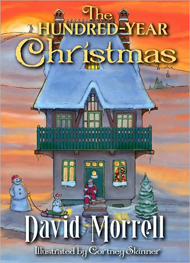 Since it’s Christmastime, can you tell us a little about your Christmas releases, THE SPY WHO CAME FOR CHRISTMAS and your 25th Anniversary Edition of THE HUNDRED-YEAR CHRISTMAS?
Since it’s Christmastime, can you tell us a little about your Christmas releases, THE SPY WHO CAME FOR CHRISTMAS and your 25th Anniversary Edition of THE HUNDRED-YEAR CHRISTMAS?
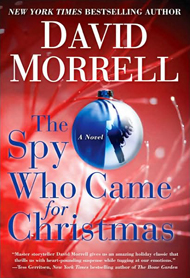
I never planned to write two Christmas books, but somehow they happened. THE HUNDRED-YEAR CHRISTMAS is a holiday story for children and adults—about Father Christmas and Father Time and their poignant relationship as Father Time grows from an infant to an old man each year while Santa never ages. It’s available as a limited signed edition, with lavish color illustrations. People can learn more about it on my website—http://davidmorrell.net/books/the-hundred-year-christmas/. Some families read it out loud during the holidays. By way of contrast, THE SPY WHO CAME FOR CHRISTMAS is a genuine spy novel with suspense and action. It’s set in a blizzard on Christmas Eve. At one point, the spy tells a story to a woman and child to distract them while they wait for killers to attack their home. That story is an espionage interpretation of the traditional nativity story. Many priests and ministers contacted me to ask if they could use it as the basis for a holiday sermon.
You are such an accomplished man and have done so much in your lifetime. Is there something you always wished you could do, but just haven’t gotten around to it yet?
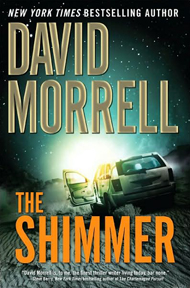 I keep wanting to grow and become fuller. For me, that means learning as much as I can about a lot of things. Researching one of my novels, THE SHIMMER, which is about the mysterious Marfa Lights in west Texas, I became a private pilot, for example. I once lived in Wyoming’s Wind River Mountains for 30 days. I learned to car fight and crash through barricades at the Bill Scott Raceway in West Virginia. The joy of research. What I’d like to do next is learn to sail.
I keep wanting to grow and become fuller. For me, that means learning as much as I can about a lot of things. Researching one of my novels, THE SHIMMER, which is about the mysterious Marfa Lights in west Texas, I became a private pilot, for example. I once lived in Wyoming’s Wind River Mountains for 30 days. I learned to car fight and crash through barricades at the Bill Scott Raceway in West Virginia. The joy of research. What I’d like to do next is learn to sail.
Can you tell us a little about the book you’re working on now and when it will be released?
My next novel is the third installment in my Thomas De Quincey Victorian mystery/thriller trilogy. It’s called RULER OF THE NIGHT, and it’ll be released on Nov. 15 of 2016. These three books required 6 years of research and writing, so I feel like a time traveler who’s slowly returning from a long-ago mesmerizing world. I felt gratified when Kirkus Reviews put INSPECTOR OF THE DEAD on its list of top ten “most arresting crime novels of 2015.”
Thank you so much, David, for taking the time to do this interview and joining us today.
MURDER AS A FINE ART
INSPECTOR OF THE DEAD
THE OPIUM EATER
RULER OF THE NIGHT
THE HUNDRED-YEAR CHRISTMAS
David Morrell is the award-winning author of FIRST BLOOD, the novel in which Rambo was created. He was born in Kitchener, Ontario, Canada. In 1960, at the age of seventeen, he became a fan of the classic television series, Route 66, about two young men in a Corvette convertible traveling the United States in search of America and themselves. The scripts by Stirling Silliphant combined action with ideas and so impressed Morrell that he decided to become a writer. (Click here to read Morrell’s essay about this remarkable series and to see a neat photo of Morrell with Silliphant on the beach at Malibu.)
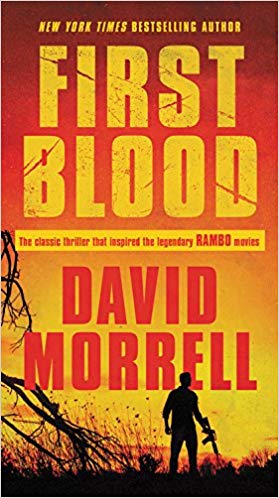 In 1966, the work of another writer (Hemingway scholar Philip Young) prompted Morrell to move to the United States, where he studied with Young at Penn State and received his M.A. and Ph. D. in American literature. There, he also met the esteemed science-fiction author William Tenn (real name Philip Klass), who taught Morrell the basics of fiction writing. The result was FIRST BLOOD a ground-breaking novel about a returned Vietnam veteran suffering from post-trauma stress disorder who comes into conflict with a small-town police chief and fights his own version of the Vietnam War.
In 1966, the work of another writer (Hemingway scholar Philip Young) prompted Morrell to move to the United States, where he studied with Young at Penn State and received his M.A. and Ph. D. in American literature. There, he also met the esteemed science-fiction author William Tenn (real name Philip Klass), who taught Morrell the basics of fiction writing. The result was FIRST BLOOD a ground-breaking novel about a returned Vietnam veteran suffering from post-trauma stress disorder who comes into conflict with a small-town police chief and fights his own version of the Vietnam War.
That “father” of modern action novels was published in 1972 while Morrell was a professor in the English department at the University of Iowa. He taught American literature there from 1970 to 1986, simultaneously writing other novels, many of them international bestsellers, including the classic spy trilogy, THE BROTHERHOOD OF THE ROSE (the basis for the only television mini-series to premier after a Super Bowl), THE FRATERNITY OF THE STONE, and THE LEAGUE OF NIGHT AND FOG.
Eventually wearying of two professions, Morrell gave up his academic tenure in order to write full time. Shortly afterward, his fifteen-year-old son Matthew was diagnosed with a rare form of bone cancer and died in 1987, a loss that haunts not only Morrell’s life but his work, as in his memoir about Matthew, FIREFLIES, and his novel DESPERATE MEASURES, whose main character lost a son.
“The mild-mannered professor with the bloody-minded visions,” as one reviewer called him, Morrell is the author of more than thirty books, including such high-action thrillers as THE NAKED EDGE, CREEPERS, and THE SPY WHO CAME FOR CHRISTMAS (set in Santa Fe, New Mexico, where he lives). Always interested in different ways to tell a story, he wrote the six-part comic-book series, CAPTAIN AMERICA: THE CHOSEN, the two-part comic-book series, SPIDER-MAN: FROST, and the standalone comic book, SAVAGE WOLVERINE: FERAL. His writing book, THE SUCCESSFUL NOVELIST, analyzes what he has learned during his four decades as an author.
 International Thriller Writers organization. Noted for his research, he is a graduate of the National Outdoor Leadership School for wilderness survival as well as the G. Gordon Liddy Academy of Corporate Security. He is also an honorary lifetime member of the Special Operations Association and the Association of Intelligence Officers. He has been trained in firearms, hostage negotiation, assuming identities, executive protection, and defensive/offensive driving, among numerous other action skills that he describes in his novels. To research the aerial sequences in THE SHIMMER, he became a private pilot, the training for which he describes here. In 2010, he was with the first group of authors to be sent on a USO tour to a war zone (Iraq). Click here to view a short video of the tour.
International Thriller Writers organization. Noted for his research, he is a graduate of the National Outdoor Leadership School for wilderness survival as well as the G. Gordon Liddy Academy of Corporate Security. He is also an honorary lifetime member of the Special Operations Association and the Association of Intelligence Officers. He has been trained in firearms, hostage negotiation, assuming identities, executive protection, and defensive/offensive driving, among numerous other action skills that he describes in his novels. To research the aerial sequences in THE SHIMMER, he became a private pilot, the training for which he describes here. In 2010, he was with the first group of authors to be sent on a USO tour to a war zone (Iraq). Click here to view a short video of the tour.
Morrell’s latest novels, MURDER AS A FINE ART and INSPECTOR OF THE DEAD, are Victorian mystery/thrillers that explore the fascinating world of 1850s London. Based on years of research, they attempt to make readers believe they are truly on those harrowing, fogbound streets. Both novels feature a controversial, brilliant literary figure of the era, Thomas De Quincey, who wrote the sensational memoir, CONFESSIONS OF AN ENGLISH OPIUM-EATER, and invented the true-crime genre in his equally sensational essay, “Postscript: On Murder Considered as One of the Fine Arts.”
Morrell is an Edgar and Anthony finalist, a Nero and Macavity winner, and a three-time recipient of the distinguished Bram Stoker Award from the Horror Writers Association. The International Thriller Writers organization gave him its prestigious career-achievement Thriller Master Award. He also received an RT Book Reviews “Thriller Pioneer” award and a Comic-Con Inkpot award for “outstanding achievement in action/adventure.” His short stories have appeared in numerous Year’s Best collections. With eighteen million copies in print, his work has been translated into twenty-six languages.
For installments in Morrell’s autobiography, please look at the following:
Fireflies: A Father’s Tale of Love and Loss
The Successful Novelist
Black Evening (introduction)
Nightscape (introduction)
American Fiction, American Myth: Essays by Philip Young (introduction)
The Hundred-Year Christmas (introduction)
Nelson Riddle: The Man Behind the Music (introduction)
The Interrogator (introduction)
Captain America: The Chosen (afterword)



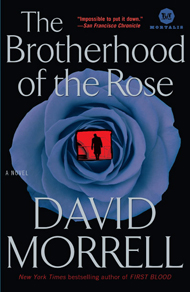
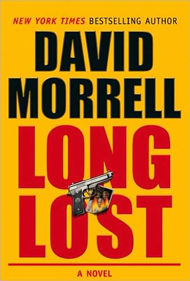
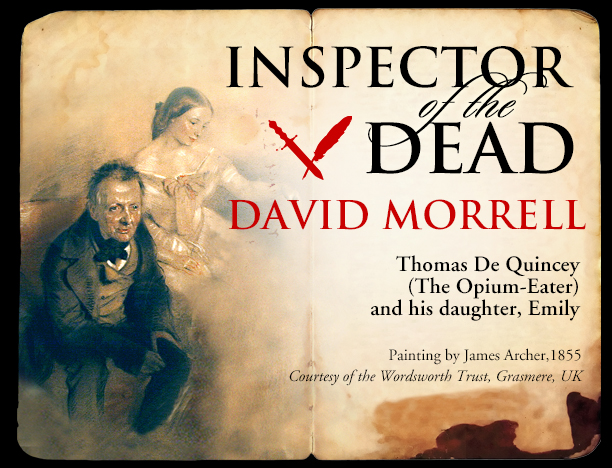













Tony N. Todaro liked this on Facebook.
Jocie McKade Author liked this on Facebook.
TheBlonde Kristine liked this on Facebook.